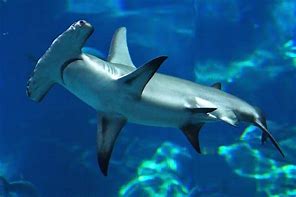
Hammerhead Shark
Hammerhead sharks are a group of sharks belonging to the family Sphyrnidae. They are named for their distinctive hammer-shaped heads, known as cephalofoils. Here are some interesting facts about hammerhead sharks:
Unique Head Shape: The most notable feature of hammerhead sharks is their elongated, flattened head that resembles a hammer or T-shaped structure. This head shape, known as a cephalofoil, has several advantages. It allows for better binocular vision and a wider field of view, enabling hammerheads to detect prey more effectively. The expanded surface area also contains specialized sensory organs called ampullae of Lorenzini, which detect electrical signals from prey.
Species Diversity: There are several species of hammerhead sharks, with the most common ones including the great hammerhead (Sphyrna mokarran), scalloped hammerhead (Sphyrna lewini), and smooth hammerhead (Sphyrna zygaena). These species vary in size, habitat preferences, and geographic distribution.
Habitat and Distribution: Hammerhead sharks are found in warm coastal waters worldwide, including tropical and subtropical regions. They inhabit both offshore and inshore environments, such as coral reefs, seagrass beds, estuaries, and continental shelves. Some species, like the great hammerhead, are known to undertake long-distance migrations.
Feeding Behavior: Hammerhead sharks are skilled predators and have a diverse diet. They primarily feed on fish, but their menu can also include various other marine animals such as squid, octopus, crustaceans, and even other sharks. Their unique head shape and sensory adaptations allow them to locate and capture prey more efficiently.
Social Behavior: Hammerhead sharks are generally solitary, but they can form aggregations during certain times, such as mating or feeding. These aggregations can consist of individuals of the same species or even mixed species. Some research suggests that hammerhead sharks may exhibit a hierarchical social structure within their groups.
Reproduction: Hammerhead sharks are viviparous, meaning they give birth to live young. They have a relatively low reproductive rate, with females producing a small number of pups after a gestation period that can last from 6 to 12 months, depending on the species. The pups are born fully developed and self-sufficient.
Conservation Status: Many species of hammerhead sharks are facing threats due to overfishing, habitat degradation, and accidental capture in fishing gear. Some species, such as the great hammerhead and scalloped hammerhead, are listed as endangered or critically endangered by the International Union for Conservation of Nature (IUCN). Conservation efforts are underway to protect hammerhead populations and their habitats.